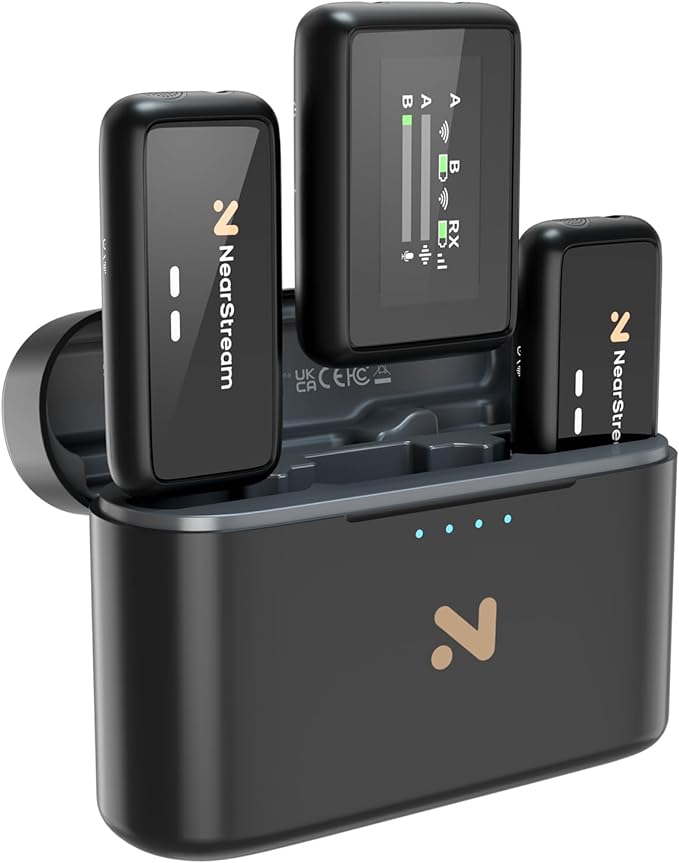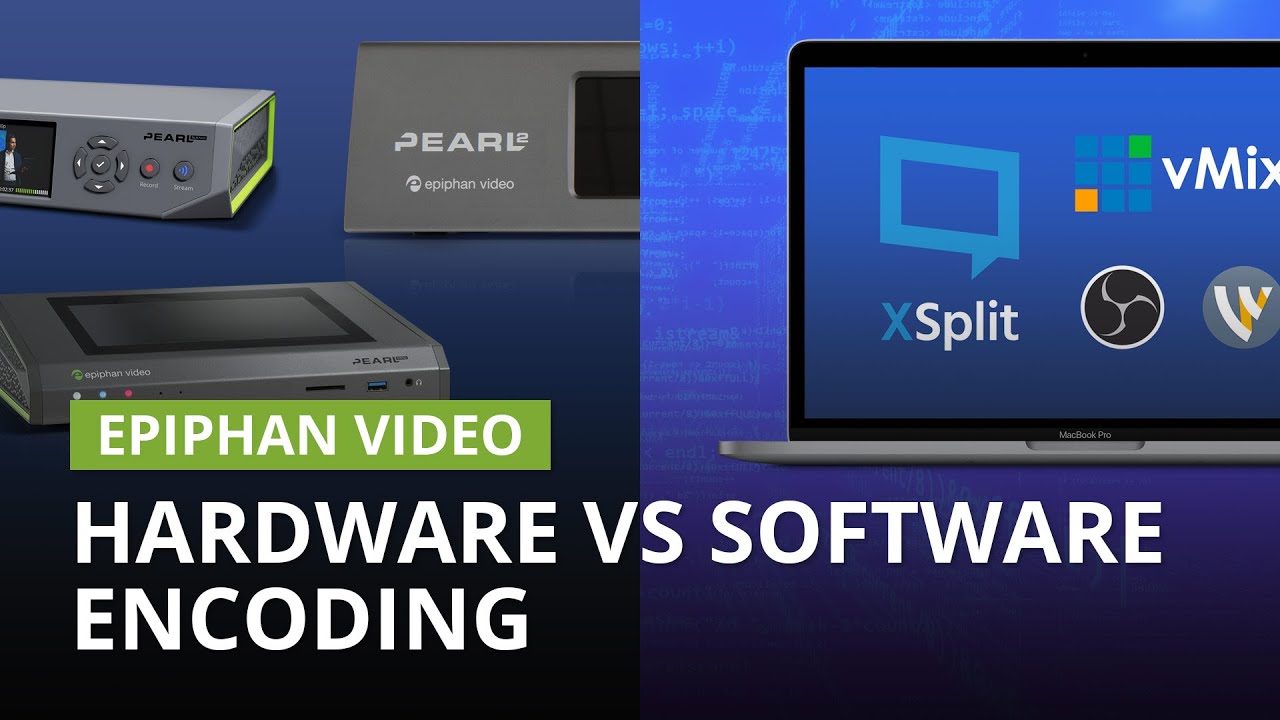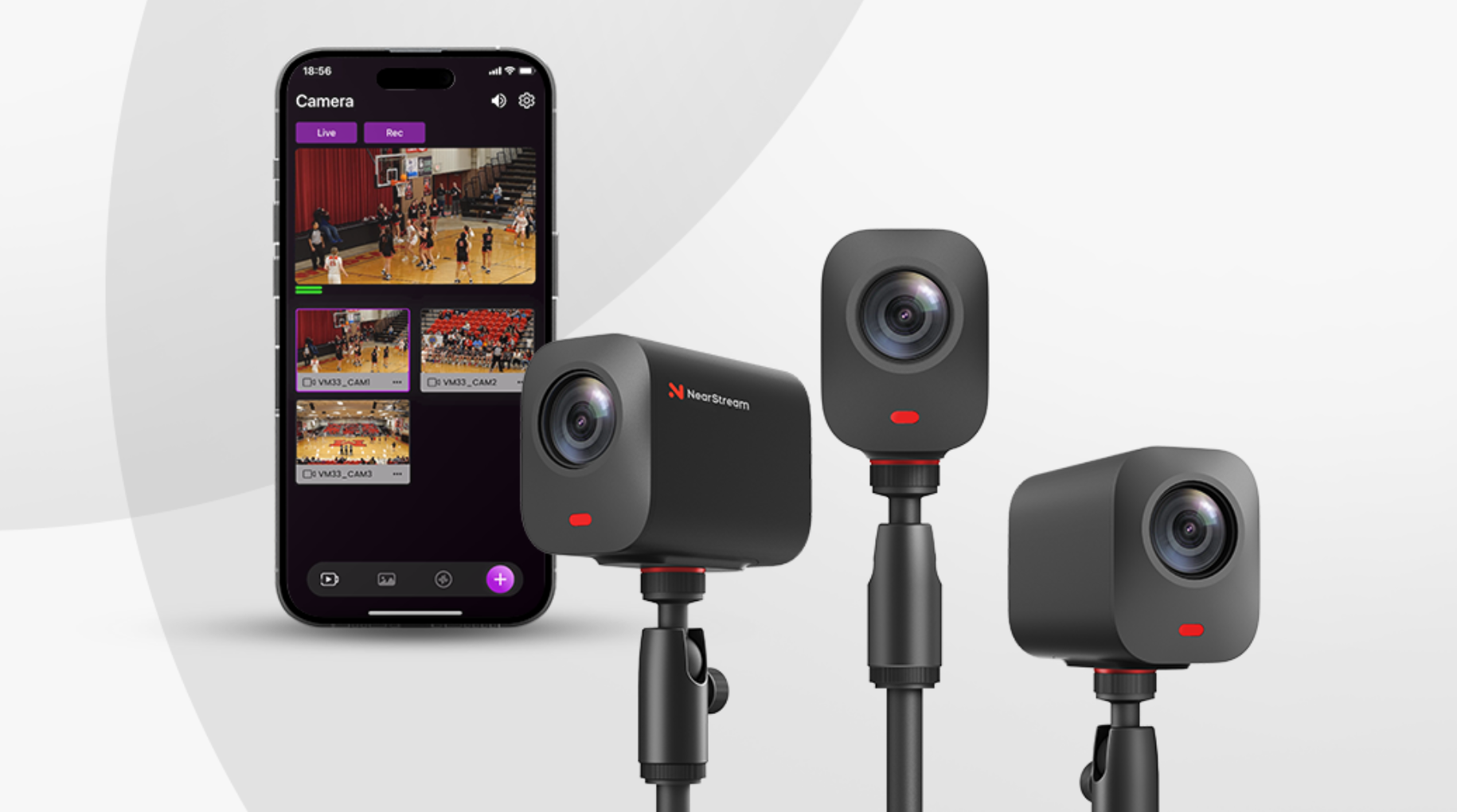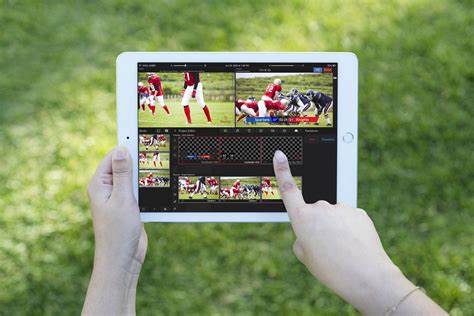Preparation: Setting the Stage Before the cameras roll
1. Choose Your Arsenal
1.1 Cameras:
The eyes of your stream. When selecting a camera for high-quality sports live streaming, consider the following:
- Resolution: High resolution is crucial for producing clear, detailed video that makes your live stream more appealing. Look for cameras that support 1080p or higher resolutions, ideally in 4K resolution.
- Frame Rate: Higher frame rates reduce motion blur and create smoother, more fluid video. Opt for cameras that shoot at 60fps or higher.
- Connectivity: Ensure the camera has appropriate connection options, such as HDMI, USB, or other interfaces, for seamless integration with your computer or other devices. If possible, choose cameras that can directly connect to live streaming platforms without additional encoders.
- Multi-Camera Capabilities: Sports events often require multi-camera setups for dynamic coverage. Cameras that support multiple angles are a priority.
- Zoom Capabilities: Sports live streaming demands both close-ups and wide shots. Cameras with flexible zoom capabilities adapt well to various sports scenarios.
Consider exploring the game-changer in sports live streaming—the NearStream VM33. Not only does it provide high-quality live recording, but its outstanding zoom capabilities also excel in outdoor shooting. Seamlessly connecting to social media platforms, it streams awe-inspiring 1080p HD video directly to popular platforms like YouTube and Twitch, or even to a custom RTMP destination, making it an ideal companion for video bloggers.
1.2 Microphones:
Each commentator or analyst needs a dedicated mic. Clear audio is non-negotiable.
Here are several microphone types that you can choose from:
- USB Microphones: Easy to use, these plug directly into your computer’s USB port. Ideal for beginners or those needing quick, straightforward setups. They come in various styles and price ranges.
- XLR Microphones: XLR microphones require an audio interface to connect to your computer. However, they offer excellent audio quality and greater customization and adjustment flexibility. Professional broadcasters often choose XLR microphones for top-quality sound.
- Lavalier (Clip-On) Microphones: Popular for their mobility and hands-free operation. These discreet microphones clip onto clothing, capturing clear audio even when you’re not in front of the computer.
- Shotgun Microphones: Another directional microphone type designed to capture sound from specific directions. Ideal for isolating your voice from other ambient sounds in noisy environments.

1.3 Encoding Software or Hardware:
Encoders convert your video and audio inputs into digital formats easily playable on the internet.
You have two main options here:
- Software Encoders: Programs like OBS Studio or Wirecast can be installed on your laptop and are suitable for budget-conscious users. However, they do consume computer resources and may require powerful machines for optimal performance.
- Hardware Encoders: These are standalone devices dedicated to encoding. Brands like Teradek and Haivision offer high-quality hardware encoders that are rugged, reliable, and don’t strain computer resources.
Investing in suitable equipment significantly enhances broadcast quality, ensuring that viewers stay glued to the screen without distractions from pixelated video or fuzzy audio.

1.4 Internet Connection:
Do not underestimate the impact of network quality in sports event live streaming.
Consider whether your live streaming conditions support wired or wireless transmission. Ensure that public internet conditions can guarantee stable live signal.
If your venue already has a good internet connection, you can completely forgo hotspots—simply plug the router into the venue’s internet connection (via Ethernet) to extend coverage and ensure your devices can connect. If the wireless internet network’s upload speed is insufficient or competes with other users, consider using your own mobile router.
Remember to conduct thorough equipment testing before starting to ensure network conditions are optimal.
2. Select Your Battlefield: The Platform
2.1 Social Media Giants:
YouTube, Facebook are popular choices. They offer built-in audiences and easy sharing.
- Facebook Live
Facebook remains the most popular social media platform on Earth and is an excellent choice for live streaming, especially if your team already has a loyal following on the site. Currently, streaming to pages or groups on Facebook can be a bit tricky, but streaming to Facebook Events is a good option for sports events.
- YouTube Live
If you’re interested in reaching the widest possible audience, YouTube might be the platform for you. Live streams on YouTube often have a longer lifespan than those on Facebook—they are more likely to be watched afterward. If you want to generate interest in your team, players, or sport, YouTube is an ideal choice.
If you want more relevant information, here we provide a comprehensive guide for you to choose the right platform for live streaming.

2.2Custom Platforms:
You can utilize sports event live streaming platforms to conduct your broadcasts. These platforms offer advanced interactivity, precise content recommendations, and professional interface design. They provide specialized technical support to ensure smooth live streaming. Access exclusive event content, including behind-the-scenes footage, player interviews, and training videos. Some notable platforms include VPlayed, Dacast, Switcher Studio, and JW Player.
Lights, Camera, Action: Going Live
1. Engage Your Audience
- Interactive Elements: Q&A sessions, polls, and live chats keep viewers hooked.
- Social Media Integration: Display tweets and Instagram posts related to the game.
2. Elevate Visuals
- Real-Time Scoreboards: Keep fans updated.
- Video Clips: Replay that jaw-dropping goal.
- Split-Screen Views: Show multiple angles simultaneously.
Promotion and Monetization
1. Build Hype
- Social Media Blitz: Tease your upcoming stream. Share behind-the-scenes glimpses, player interviews, and countdowns.
- Collaborate: Partner with influencers, sports blogs, and local communities. Word of mouth matters.
2. Monetize Like a Pro
- Sponsorships: Brands love exposure. Strike deals with local businesses or sports gear companies.
- Ads and Subscriptions: Monetize through pre-roll, mid-roll, or post-roll ads. Offer premium subscriptions for exclusive content.

Post-Game Analysis: The Aftermath
1. Data Is Gold
- Audience Metrics: Who watched? When did they drop off? Analyze to improve future streams.
- Feedback: Listen to viewers. What worked? What didn’t?
2. Content Repurposing
- Highlights Reel: Create bite-sized clips for social media.
- Behind-the-Scenes: Share candid moments with players and crew.
Conclusion
Sports events live isn’t just about pixels on a screen; it’s about connecting fans worldwide. So, whether you’re streaming a local soccer match or the Olympics, remember: Every pixel counts, every cheer matters, and every viewer is part of the action. The above is just a brief guide, after you've gotten started, you still need to continue learning to improve your live streaming skills and provide viewers with a better streaming experience.
























